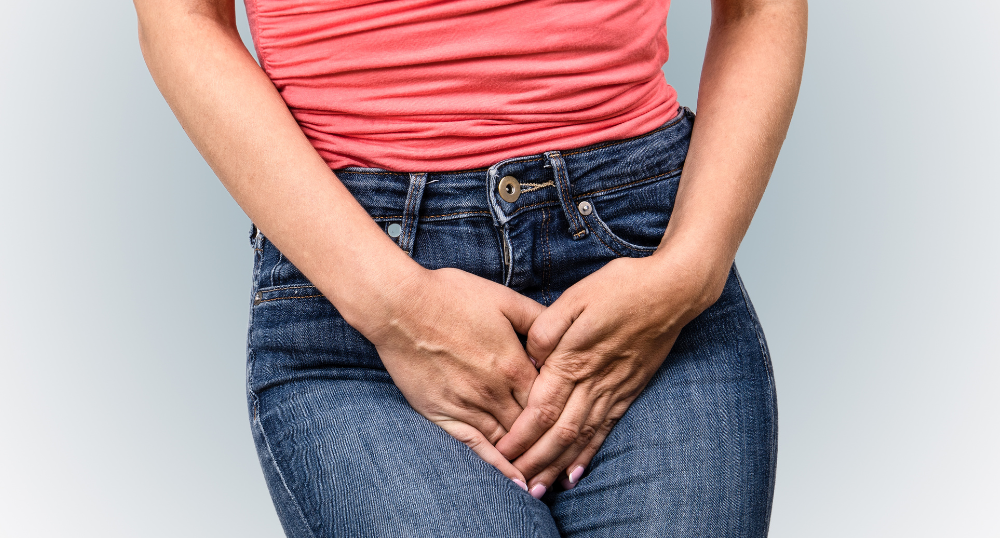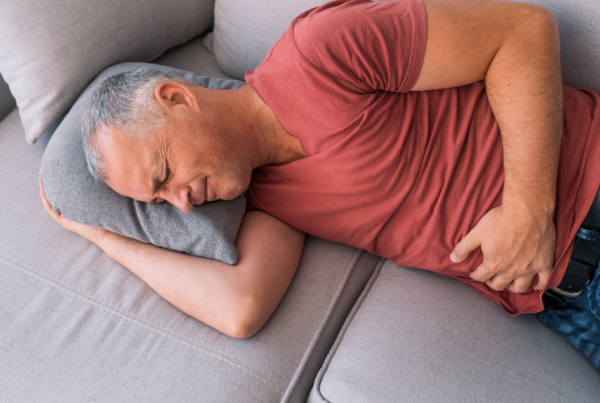Urinary Urgency
Move Better. Live Fuller. Your Wellness Journey Starts Here.
Schedule a FREE Discovery Call!
What Is Urinary Urgency?
From a pelvic floor physical therapy perspective, urinary urgency is a symptom described by a sudden, intense need to urinate that can be difficult to prevent or delay.
Urinary urgency should not to be confused with urge incontinence, which is specifically the inability to stop the urge to urinate, resulting in leakage.
They are very similar; however, urinary urgency doesn’t necessarily result in leakage. It is important to distinguish the two, as they can actually become causes for each other, and are both closely related to pelvic floor dysfunction.
For further clarification:

- Urinary urgency: The sensation of an intense need to relieve oneself. It is difficult to delay, and can bring about fears of soiling—which may or may not occur.
- Urge incontinence: A result of urinary urgency that involves soiling or leakage. This is due to the inability to delay the urge or reach the restroom in time.
Why does it matter, if they are so similar? Well, these two terms may sound like practically the same thing, but the result of leakage and ability (or inability) to stop the urge is what really sets them apart. There are conditions and symptoms where an individual may have a strong urge to urinate, but not actually have much urine to release at all. Or, on the other hand, they may have a strong urge that unfortunately results in soiling oneself. Additionally, the level of ability one has to control or delay the urge can be an indication of their pelvic floor health.
This distinction will help your pelvic floor physical therapist understand your unique situation and condition better—and therefore, how to address those issues better. There are many conditions of the bladder, urinary system, and pelvic floor muscles that may have similar symptoms or be interrelated. Digging deeper to get to the root of the issue is very important for an accurate diagnosis and treatment!
What Causes Urinary Urgency?
Urinary urgency can be caused by a variety of factors, such as conditions of the bladder, nerves, or pelvic floor. Pelvic floor dysfunction is a common cause that is often intertwined with a variety of conditions. It refers to issues with the pelvic floor muscles, where they may be too tight (hypertonic), too weak (hypotonic), or uncoordinated. This can create difficulties such as:
- Confusion and discoordination when contracting or relaxing pelvic muscles during urination.
- Tightened pelvic floor muscles which can prevent proper urination—leading to frequency, pain, and other conditions such as UTIs.
- Weakened pelvic floor muscles, which can lead to urge incontinence due to being unable to hold back the urge.
Pelvic floor dysfunction can also refer to a disconnection between the pelvic floor muscles and the bladder. When the bladder fills with urine, it usually sends signals to the brain, letting you know there is a need to urinate. When there is dysfunction present, these signals are sent even when the bladder may not actually be full—resulting in urgency.
Some other conditions that can create urinary urgency include:
Interstitial cystitis: A condition that creates pain with urination, frequent urination, and urgency.
Overactive bladder (OAB): A condition that is primarily characterized by both urinary urgency and urge incontinence.
Neurological conditions or nerve damage: Some injuries and conditions such as multiple sclerosis or Parkinson’s disease can make it difficult for accurate or effective signals to travel between the bladder and brain.
Bladder irritation: Medications, foods, and beverages can cause irritation of the bladder, which may result in urgency. Some common irritants include caffeine, alcohol, and acidic or spicy foods.
Bathroom habits / behaviors: Using the restroom too often, holding urine for too long, toilet postures, and more can worsen urinary conditions and even create complications.
Psychological factors: Stress or anxiety can contribute to pelvic muscle tension, which in turn can contribute to pelvic floor dysfunction.
Pregnancy: The added weight from pregnancy, as well as the change in the body’s angles can put more pressure on the bladder and pelvic floor. Hormonal changes can also affect bladder function.
Menopause: Hormonal changes from menopause can affect the pelvic floor, urethra, and other related areas, which may create urgency and other symptoms of dysfunction.
Physical Therapy for Urinary Urgency
Physical therapy for urinary urgency primarily involves addressing the pelvic floor (pelvic floor physical therapy), although treatment often includes a variety of holistic approaches. At Hive Therapy and Wellness, our physical therapists will incorporate behavioral modifications to improve bathroom and postural habits, and may suggest dietary changes that could be affecting your bladder health. This is important for preventative health, and allows patients to avoid future complications!
Behavioral modifications can include your posture on the toilet, how often you use the restroom, how often or how long you may be holding urine, and more. Physical therapists can teach you behavioral changes and strategies to deal with urgency and urge incontinence, such as urge suppression, relaxation techniques, and pelvic floor exercises.
Part of your holistic treatment also involves education. Because bladder conditions and urinary urgency can become confusing, your physical therapist will be happy to thoroughly walk you through everything: Why your body may behave the way it is, which treatments will be suitable for addressing your symptoms, and how each treatment works. They’ll be able to explain your pelvic floor dysfunction or bladder condition if necessary, and help answer any questions you may have about your unique situation.
As part of your urinary urgency treatment, your physical therapist will address your pelvic floor health in order to determine any dysfunction present—weakness, tightness, incoordination, or a combination. They will then use a variety of treatments to help you better control your pelvic floor and to regain proper pelvic floor function. This can involve strengthening through exercises, improving coordination with biofeedback, utilizing relaxation techniques, manual therapy, and more.
If your urinary urgency is a result of a specific condition such as overactive bladder or interstitial cystitis, they can also provide other treatments to address symptoms such as pelvic pain or abdominal pain. Treatment with Hive Therapy and Wellness is always catered to the individual, taking into account your individual needs and condition. Your provider will assess your pelvic floor health and other needs, and create a plan of care that best addresses your concerns and symptoms. Some common treatment methods you can expect your Hive physical therapist to utilize include:
- Neuromuscular re-education
- Manual therapy
- Exercise prescription
- Cupping
- Behavioral modifications
- Therapeutic activities
- Spinal manipulation
- Therapeutic modalities
- Biofeedback
From a pelvic floor physical therapy perspective, urinary urgency is a symptom described by a sudden, intense need to urinate that can be difficult to prevent or delay.
Urinary urgency should not to be confused with urge incontinence, which is specifically the inability to stop the urge to urinate, resulting in leakage.
They are very similar; however, urinary urgency doesn’t necessarily result in leakage.
It is important to distinguish the two, as they can actually become causes for each other, and are both closely related to pelvic floor dysfunction. For further clarification:
Urinary urgency: The sensation of an intense need to relieve oneself. It is difficult to delay, and can bring about fears of soiling—which may or may not occur.
Urge incontinence: A result of urinary urgency that involves soiling or leakage. This is due to the inability to delay the urge or reach the restroom in time.
Why does it matter, if they are so similar?
Well, these two terms may sound like practically the same thing, but the result of leakage and ability (or inability) to stop the urge is what really sets them apart.
There are conditions and symptoms where an individual may have a strong urge to urinate, but not actually have much urine to release at all.
Or, on the other hand, they may have a strong urge that unfortunately results in soiling oneself. Additionally, the level of ability one has to control or delay the urge can be an indication of their pelvic floor health.
This distinction will help your pelvic floor physical therapist understand your unique situation and condition better—and therefore, how to address those issues better.
There are many conditions of the bladder, urinary system, and pelvic floor muscles that may have similar symptoms or be interrelated.
Digging deeper to get to the root of the issue is very important for an accurate diagnosis and treatment!
Urinary urgency can be caused by a variety of factors, such as conditions of the bladder, nerves, or pelvic floor. Pelvic floor dysfunction is a common cause that is often intertwined with a variety of conditions.
It refers to issues with the pelvic floor muscles, where they may be too tight (hypertonic), too weak (hypotonic), or uncoordinated. This can create difficulties such as:
- Confusion and discoordination when contracting or relaxing pelvic muscles during urination.
- Tightened pelvic floor muscles which can prevent proper urination—leading to frequency, pain, and other conditions such as UTIs.
- Weakened pelvic floor muscles, which can lead to urge incontinence due to being unable to hold back the urge.
Pelvic floor dysfunction can also refer to a disconnection between the pelvic floor muscles and the bladder. When the bladder fills with urine, it usually sends signals to the brain, letting you know there is a need to urinate.
When there is dysfunction present, these signals are sent even when the bladder may not actually be full—resulting in urgency.
Some other conditions that can create urinary urgency include:
Interstitial cystitis: A condition that creates pain with urination, frequent urination, and urgency.
Overactive bladder (OAB): A condition that is primarily characterized by both urinary urgency and urge incontinence.
Neurological conditions or nerve damage: Some injuries and conditions such as multiple sclerosis or Parkinson’s disease can make it difficult for accurate or effective signals to travel between the bladder and brain.
Bladder irritation: Medications, foods, and beverages can cause irritation of the bladder, which may result in urgency. Some common irritants include caffeine, alcohol, and acidic or spicy foods.
Bathroom habits / behaviors: Using the restroom too often, holding urine for too long, toilet postures, and more can worsen urinary conditions and even create complications.
Psychological factors: Stress or anxiety can contribute to pelvic muscle tension, which in turn can contribute to pelvic floor dysfunction.
Pregnancy: The added weight from pregnancy, as well as the change in the body’s angles can put more pressure on the bladder and pelvic floor. Hormonal changes can also affect bladder function.
Menopause: Hormonal changes from menopause can affect the pelvic floor, urethra, and other related areas, which may create urgency and other symptoms of dysfunction.
Physical therapy for urinary urgency primarily involves addressing the pelvic floor (pelvic floor physical therapy), although treatment often includes a variety of holistic approaches.
At Hive Therapy and Wellness, our physical therapists will incorporate behavioral modifications to improve bathroom and postural habits, and may suggest dietary changes that could be affecting your bladder health.
This is important for preventative health, and allows patients to avoid future complications!
Behavioral modifications can include your posture on the toilet, how often you use the restroom, how often or how long you may be holding urine, and more.
Physical therapists can teach you behavioral changes and strategies to deal with urgency and urge incontinence, such as urge suppression, relaxation techniques, and pelvic floor exercises.
Part of your holistic treatment also involves education. Because bladder conditions and urinary urgency can become confusing, your physical therapist will be happy to thoroughly walk you through everything: Why your body may behave the way it is, which treatments will be suitable for addressing your symptoms, and how each treatment works.
They’ll be able to explain your pelvic floor dysfunction or bladder condition if necessary, and help answer any questions you may have about your unique situation.
As part of your urinary urgency treatment, your physical therapist will address your pelvic floor health in order to determine any dysfunction present—weakness, tightness, incoordination, or a combination.
They will then use a variety of treatments to help you better control your pelvic floor and to regain proper pelvic floor function.
This can involve strengthening through exercises, improving coordination with biofeedback, utilizing relaxation techniques, manual therapy, and more.
If your urinary urgency is a result of a specific condition such as overactive bladder or interstitial cystitis, they can also provide other treatments to address symptoms such as pelvic pain or abdominal pain.
Treatment with Hive Therapy and Wellness is always catered to the individual, taking into account your individual needs and condition.
Your provider will assess your pelvic floor health and other needs, and create a plan of care that best addresses your concerns and symptoms. Some common treatment methods you can expect your Hive physical therapist to utilize include:
- Neuromuscular re-education
- Manual therapy
- Exercise prescription
- Cupping
- Behavioral modifications
- Therapeutic activities
- Spinal manipulation
- Therapeutic modalities
- Biofeedback
You can learn more about these treatments on our Treatments Page.





